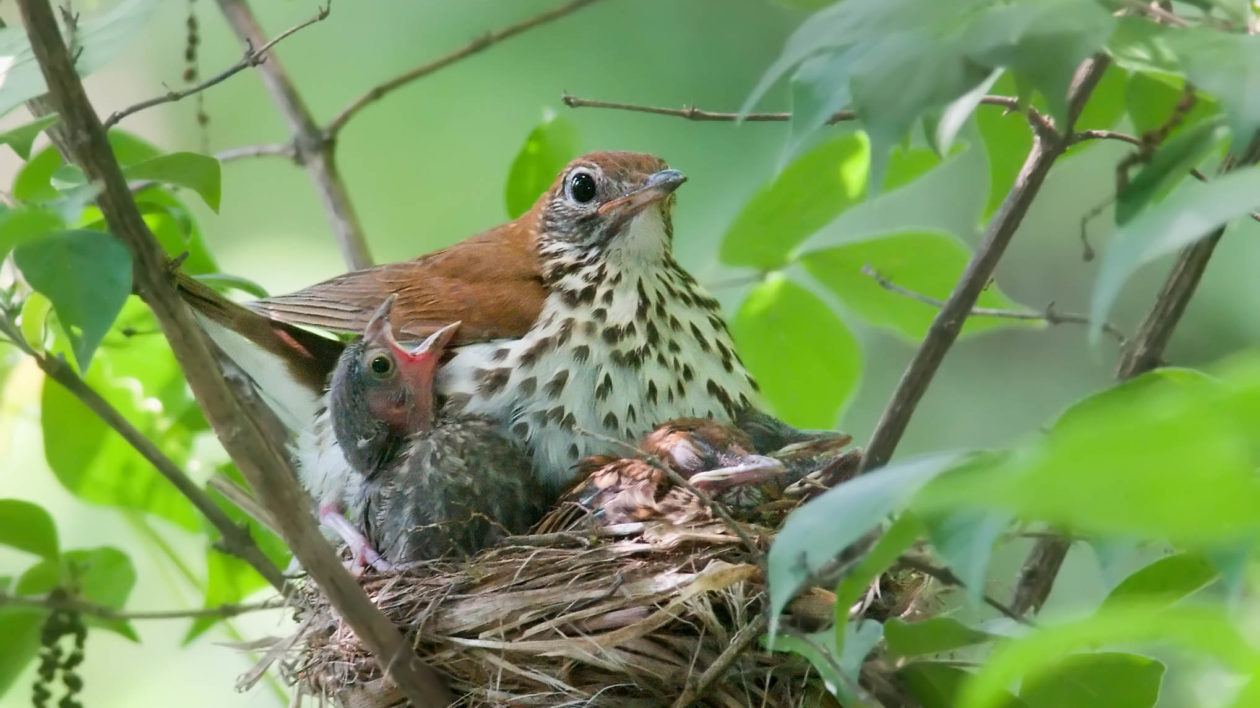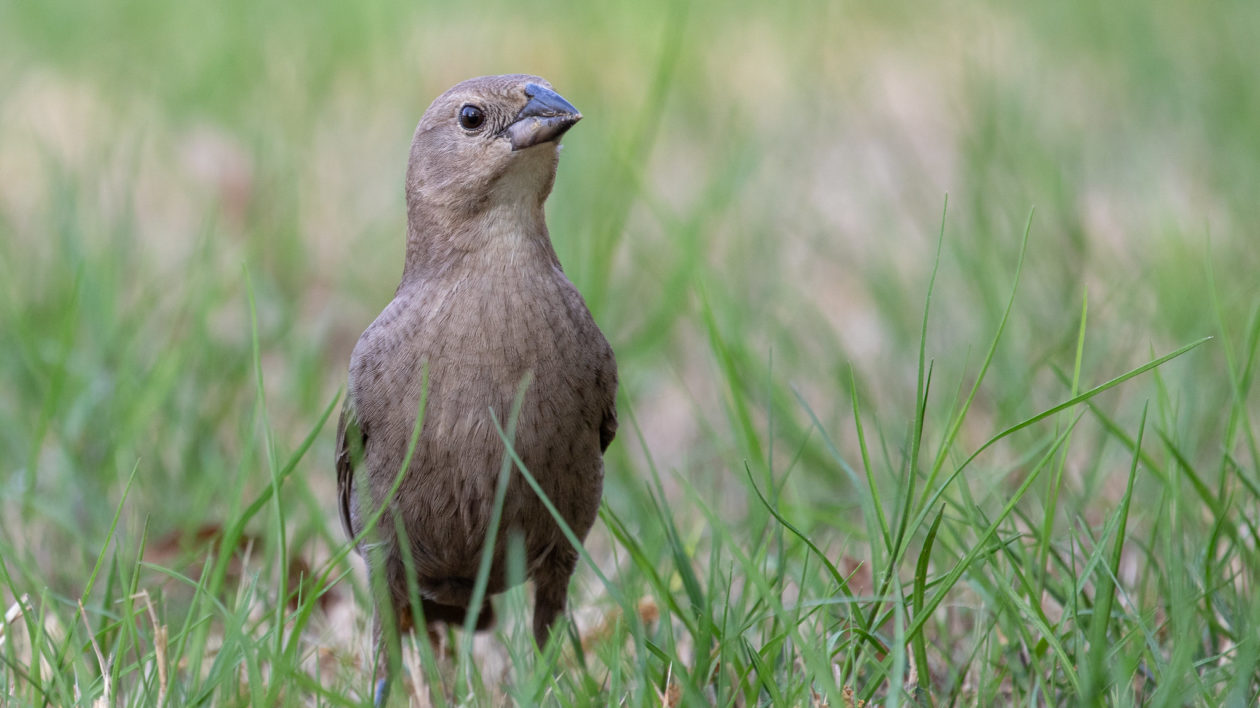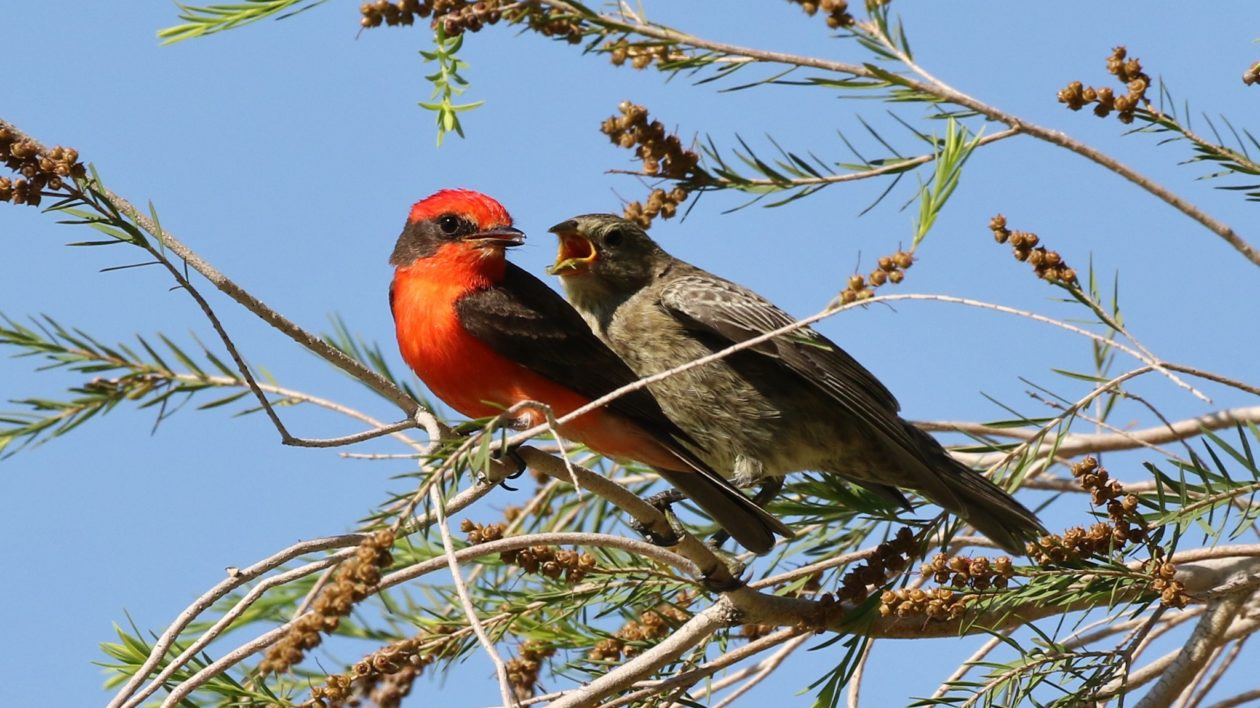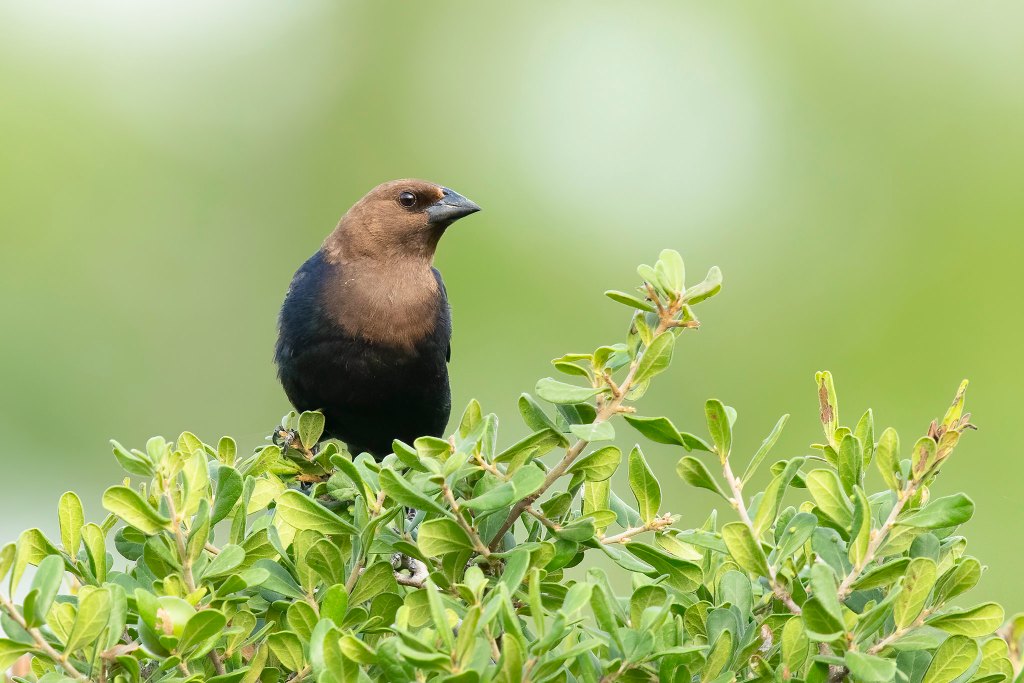Talk about childcare: this bird has figured out a way around that.
The brown-headed cowbird (Molothrus ater) is a well-known North American native bird found throughout the United States, northern Mexico and most of Canada. They also are a very well-known obligate brood parasite.
So what exactly is brood parasitism and how did this peculiar behavior come about? Basically, it means laying your own eggs into the nests of others. According to Dr. Mark E. Hauber, ornithologist and professor in integrative biology at the University of Illinois at Urbana-Champaign, brood parasitism is carried out by multiple species including birds, fishes and social insects such as termites, wasps, bees, ants and beetles.
But cowbirds remain one of the best-known examples. What is really going on with cowbirds?

When it comes to this species, brood parasitism likely originated due to high rates of nest predation, where individual females who lost their clutch to predation during the egg laying stage had “spare” eggs to lay and benefited from sneaking these eggs into the nests of other individuals or even other species.
The act of brood parasitism allows females to forgo the costs of nest building, incubating eggs, and feeding and protecting vulnerable young. Instead, they can invest their energy on laying more eggs per season.
“There is a cost of parasitism, though,” says Hauber. “Many hosts attack and potentially harm brood parasitic adults, occasionally killing them.”

To see brood parasitism in action has been an amazing thing for some researchers. Dr. Desirée L. Narango, a postdoctoral researcher at the University of Massachusetts, Amherst, describes her experience with cowbirds while she was a master’s student at Ohio State University studying and monitoring northern cardinal (Cardinalis cardinalis) and Acadian flycatcher (Empidonax virescens) populations.
“In Ohio, cardinals start breeding from mid-March until late August,” she says. “In order to monitor populations, we have to find a lot of nests. Cardinals put their nests in predictable locations such as dense shrubs and saplings, so they can be pretty easy to find once you get a search image for them.”
As Narango and her team carried out nest searches, they were careful to not make the nest locations more obvious to predators like raccoons and blue jays. In those urban and rural forest fragments, cowbirds were also abundant.

“We always had to keep an eye out for cowbirds, who are especially smart and sneaky. The females would sit in the trees persistently watching you, waiting to see where you would make your move,” she says. “On occasion, I would even catch them silently following me as I moved through the underbrush. You’d take a look over your shoulder and see a curious beady eye staring down right at you.”
Once a cowbird finds a valuable host nest to lay their eggs, they will stalk and sometimes even destroy the original nest of the host bird in order to be in sync with the host bird’s incubation time.
As the cowbird nestlings’ hatch and are being raised, this can bring negative effects to the nestlings of the host bird. Nestling growth rates of the host can decrease due to larger demand from the parasitic offspring of the cowbird. It is clearly the “survival of the fittest” when it comes to the methods of this brood parasite.
Even once they begin to fledge, the cowbirds will continue to receive care from the host bird.
Dr. Alexandra Anderson, avian ecologist and postdoc at Trent University in Peterborough, Canada recalls her first-hand observation of this behavior while out recreational birding with her partner at High Park in Toronto, a park which she describes as a “large urban park similar in idea to ‘Central Park’ in New York City, though maybe with a bit more nature.”
“I recall the observation pretty clearly because it was so unique to me,” says Anderson. “We stopped with our binoculars to get a view. We located the culprit, a fledgling cowbird squawking and making begging calls. Suddenly [a] cardinal flew in, the cowbird opened its mouth, and the cardinal fed the cowbird. It was a pretty special observation!”

So how exactly do cowbirds know that they are a “cowbird” and not the same species as their “host” parent?
A study conducted in 2001 has the answer: password recognition.
The female cowbird’s chatter serves as a “special password” that guides species-specific recognition: the young cowbirds learn to associate cowbird chatters with salient social stimulation to associate with and learn about other cowbird-specific traits as they develop.
Known as the “password hypothesis”, a special process exists to guide how young cowbirds come to recognize their own species. Since they can’t imprint on their host parents, they are tuned to pay attention to the chatter call which is attractive for them. Once they approach that chatter from adult cowbirds, they open their learning process and acquire all kinds of knowledge about being a grown-up cowbird.
Ultimately, I guess you could say that the brown-headed cowbird has got everything figured out! Talk about a very crafty way to raise your young, without really raising your young.




Beautiful birds
Should we kill them if we dont want them to ruin the rest of the bird population?
They just rolled in this year and have taken over everything…Bah humbug!
Thank You!
I dont enjoy killing things but the cow birds are the only birds at the feeder anymore. and they are BULLIES ,HAVE A NASTY ,BRASH CALL , AND DON”T PLAY WELL WITH OTHERS,,THEY PUFF UP AND “COW” THE OTHER BIRDS INTO LEAVING>
Follow up article please: How do cuckoos know they are cuckoos ? Is it the same ‘password recognition’ or something else.
Great piece as usual. Technically, it’s a violation of the Migratory Bird Treaty Act to destroy cowbird eggs. But cowbirds are devastating all manner of troubled bird species in the East where cowbirds are invasive aliens. They came East because of land clearing and roads. I was disappointed to read in Audubon magazine, a publication I was proud to be a big part of for 35 years, a piece urging people not to remove cowbird eggs from the nests of native birds. Yes, it’s illegal, but it’s also illegal to clean out the old, soiled, wet (often louse or ant infested) nests in bluebird boxes before the next nesting season. I don’t know anyone who has bluebird boxes who doesn’t do that. My point is this: There are laws and higher laws.